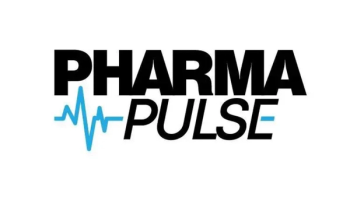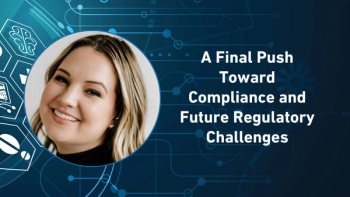Key Takeaways
- AI enhances traditional HTA by improving accuracy and efficiency. Artificial intelligence addresses key limitations of traditional health technology assessments—such as data gaps and time-intensive processes—through automation, real-time data integration, and advanced predictive modeling, leading to faster and more informed decisions.
- AI supports personalized medicine and real-world evidence integration. By analyzing large datasets from EHRs, patient registries, and genomics, AI improves the evaluation of individualized treatments and helps generate robust RWE to guide value-based pricing and reimbursement decisions.
- Challenges remain in AI adoption for HTA. Despite its potential, AI faces limitations such as data privacy barriers, algorithm bias, interpretability issues, and the lack of regulatory standards—factors that must be addressed to ensure responsible and equitable implementation in healthcare policy.
Health technology assessment (HTA) for pharmaceuticals is a systematic evaluation of the clinical, economic, and social implications of a drug. It plays a crucial role in informing pricing, reimbursement, formulary decisions, and policy decisions. However, traditional HTA methods have several limitations, including data gaps, time-intensive processes, and challenges in evaluating personalized medicine. Artificial intelligence (AI) presents a transformative opportunity to address these challenges and enhance HTA methodologies while ensuring more informed formulary decisions and efficient allocation of healthcare resources.
In this article, we’ll explore the limitations of traditional HTA; the ways AI can enhance HTA methodologies; AI applications in HTA; its integration with existing frameworks; its role in value-based pricing and real-world evidence (RWE) generation; and the limitations of AI in HTA.
Limitations of traditional HTA for pharmaceuticals
Despite its importance, HTA faces several constraints. Many evaluations rely on clinical trial data, which may not reflect real-world effectiveness. Additionally, long-term safety and efficacy data are often unavailable at the time of assessment. The process itself is highly time-intensive—sometimes taking months or even years—leading to delays in patient access to innovative treatments. Traditional HTA models are also built on fixed assumptions, making it difficult to adapt to new data or individual patient variability. Furthermore, the assessment of personalized medicine—particularly gene therapies—is challenging due to small patient populations and individualized treatment effects. Economic biases often arise because cost-effectiveness thresholds may undervalue treatments for rare diseases or those with long-term benefits.
Many HTA models also do not fully incorporate real-world patient outcomes, limiting predictive accuracy. Additionally, the variability in HTA methodologies and cost-effectiveness thresholds across different countries creates inconsistencies in assessments. Another significant limitation is the lack of real-time adaptability in formulary decision-making, often leading to delays in drug accessibility and inefficient allocation of resources. Furthermore, when a comparator treatment is available, HTA often lacks head-to-head trial data, making comparative effectiveness assessments more uncertain and leading to reliance on indirect or network meta-analyses, which may introduce additional biases and uncertainties.
How AI can address HTA limitations
AI offers solutions to these limitations through advanced predictive modeling, automation, and real-time data integration. It enhances predictive modeling by simulating long-term drug outcomes using real-world data (RWD), thereby improving the accuracy of effectiveness and cost-effectiveness predictions. By automating data extraction, synthesis, and modeling, AI significantly reduces HTA timelines, allowing for faster decision-making. Machine learning models enable dynamic HTA models that continuously update based on new clinical data, RWE, and evolving healthcare costs.
It also helps boost the evaluation of personalized medicine by assessing treatment value on an individual patient basis, making HTA more relevant for precision medicine. Additionally, AI enables better utilization of RWD by analyzing large datasets from EHRs, wearables, and patient registries to improve predictive accuracy. AI-driven methodologies can refine cost-effectiveness models by incorporating indirect benefits, such as productivity gains and quality of life improvements.
With the help of AI-driven standardization, there is the potential to unify HTA methodologies across different countries, making assessments more comparable and scalable. AI also plays a pivotal role in formulary decision-making by dynamically assessing RWE, cost-effectiveness, and treatment outcomes to optimize drug inclusion in formularies, ensuring efficient resource utilization and cost-effective healthcare delivery.
AI applications in HTA
Natural language processing (NLP) for literature reviews
HTA requires systematic reviews of clinical trials, RWE, and economic models. In order to automate and enhance these tasks, AI-driven NLP can assist. Utilizing automated systematic reviews allows AI to scan thousands of articles and can extract relevant data much faster than human reviewers; it can also analyze trial reports and summarize how a new drug compares to existing therapies. Sentiment analysis techniques can process social media, patient forums, and electronic health records (EHRs) to assess real-world drug experiences, providing valuable insights into patient-centered outcomes. Additionally, NLP can detect biases in literature by identifying inconsistencies or missing data in clinical studies that may affect HTA evaluations. AI also facilitates multilingual data processing, enabling comprehensive global HTA assessments by translating and analyzing research published in different languages.
Deep learning for survival analysis
Survival analysis is critical in HTA for predicting long-term drug benefits, particularly in oncology, chronic diseases, and rare conditions. AI enhances survival analysis by better handling time-dependent data through advanced techniques such as recurrent neural networks and long short-term memory networks. These models can accurately model changes in patient survival probabilities over time. AI improves patient outcome predictions by combining clinical trial data with RWE, including EHR and genomics. Adaptive models refine predictions as new therapies enter the market, reducing uncertainty in long-term cost-effectiveness. Additionally, deep learning techniques enable personalized risk prediction by assessing individual patient factors such as genetics, biomarkers, and lifestyle to determine who will benefit most from a treatment.
AI integration with HTA frameworks
HTA frameworks vary by country, but AI can enhance decision-making for agencies such as NICE (UK), ICER (US), and EUnetHTA (EU). In the UK, AI-driven cost-effectiveness models can refine quality-adjusted life year (QALY) estimates by integrating NHS patient data. NLP can automate literature reviews, reducing assessment delays, while AI-powered evidence synthesis improves predictions of long-term treatment effects. In the US, AI enhances budget impact modeling by integrating RWD from claims databases and EHRs. Deep learning refines long-term drug benefit projections for chronic and rare diseases, and AI can dynamically adjust pricing models based on real-world cost-effectiveness data.
In the EU, AI aids in standardizing cost-effectiveness analyses across different health systems. NLP synthesizes data from multiple EU clinical trials to accelerate drug approvals, and AI facilitates real-time monitoring of drug performance across EU nations. Additionally, AI-driven formulary decisions in these regions help balance cost constraints while ensuring that the most effective treatments remain accessible to patients.
AI in value-based pricing and RWE generation
AI has the potential to transform value-based pricing (VBP) by leveraging machine learning for dynamic pricing models that adjust drug prices based on real-world patient outcomes. It can even support predictive risk-sharing agreements by identifying patient subgroups most likely to benefit, thus refining risk-sharing contracts. NLP can analyze global HTA reports and generate customized VBP recommendations tailored to different healthcare systems. AI enables personalized value assessments by segmenting patient populations and assigning individualized value scores to drugs, ensuring fair pricing models that align with patient needs and treatment efficacy.
AI in real-world evidence generation
AI plays a significant role in RWE generation by automating data extraction from EHRs and insurance claims to provide robust insights into drug performance. Deep learning enhances predictive analytics by detecting early safety signals and unexpected adverse effects from RWD, thereby improving drug safety assessments.
AI can also facilitate real-world treatment comparisons by analyzing patient cohorts to determine which drug or therapy works best under practical conditions. Along with that, AI-powered real-time monitoring methods continuously update drug effectiveness data, allowing for dynamic reimbursement adjustments and ensuring optimal treatment access for patients.
AI in HTA limitations
Despite its advantages, AI in HTA has several limitations, including that AI models require large, high-quality datasets, which are often fragmented or inaccessible due to privacy regulations. Additionally, AI-driven predictions can be biased if trained on non-representative or incomplete datasets. The black-box nature of some AI algorithms makes it difficult for HTA stakeholders to interpret results, reducing trust in AI-driven assessments. Regulatory bodies have yet to establish standardized frameworks for AI integration in HTA, leading to variability in adoption. It’s possible that AI may not fully capture qualitative aspects of patient experiences, ethical considerations, and social value, which are crucial in HTA decision-making.
Overall, AI is revolutionizing HTA by enhancing predictive accuracy, accelerating decision-making, and improving the integration of RWE. However, addressing AI's limitations, including data accessibility, interpretability, and ethical concerns, will be essential for its widespread adoption. As AI continues to evolve, it has the potential to transform formulary decisions and healthcare policy, making HTA more responsive, equitable, and efficient.
About the Author
Thani Jambulingam, PhD, is a professor of food, pharma, and healthcare business at Saint Joseph’s University’s Erivan K. Haub School of Business.






